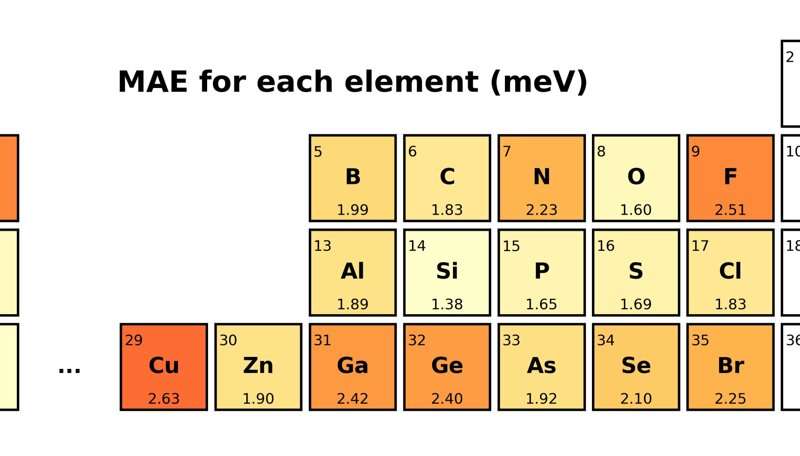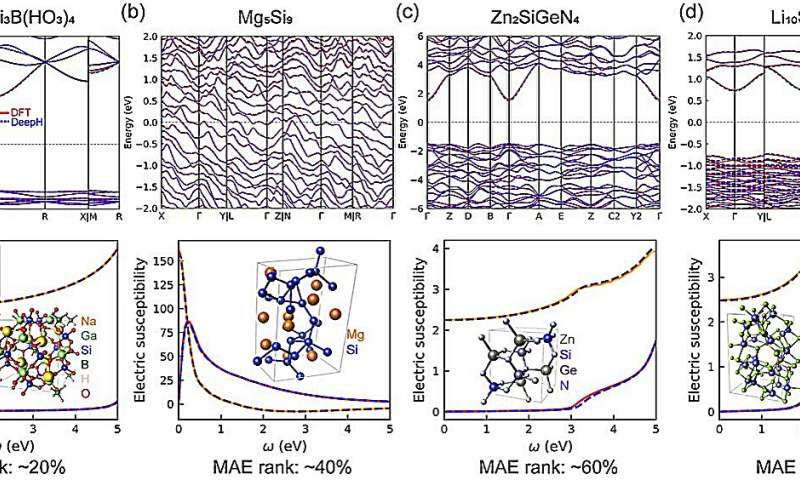This article has been reviewed according to Science X's editorial process and policies. Editors have highlighted the following attributes while ensuring the content's credibility:
fact-checked
trusted source
proofread
Towards a large materials model for AI-driven materials discovery

Following the success of large language models, the concept of large materials models as deep-learning computational models for materials design has attracted great interest. Nevertheless, the task of acquiring large materials models appears to be quite challenging, given the inherent complexity of the structure-property relationship in materials.
A research team from Tsinghua University, led by Prof. Yong Xu and Prof. Wenhui Duan, sought to overcome this challenge by developing large materials models using the deep-learning density functional theory Hamiltonian (DeepH) method.
Density functional theory (DFT) has emerged as a highly valuable first-principles approach for computational materials design and is one of the most popular methods in computational materials science. The DFT Hamiltonian serves as a fundamental quantity in DFT computations, enabling the straightforward derivation of all other physical quantities, including total energy, charge density, band structure, physical responses, etc.
The team's work is published in the journal Science Bulletin.
While the DeepH method has been widely applied to study specific materials, developing a universal materials model of DeepH capable of handling diverse material structures across most elements of the periodic table remains elusive. DeepH leverages prior knowledge of physics to enhance its model performance.
-

Mean absolute error (MAE)s of the predicted DFT Hamiltonian averaged for each element, showing high prediction accuracy at the level of meV. Credit: Science China Press -

Testing the universal materials model by comparing DFT-calculated and DeepH-predicted band structures and electric susceptibilities χ as a function of frequency ω for representative test materials (with MAE ranks of ~20%, ~40% ~60% and ~80%). The corresponding material structures are displayed in the insets. Credit: Science China Press
The prior knowledge includes the fundamental principle of equivariance as well as the "quantum nearsightedness principle." The latter principle states that local quantities, such as the DFT Hamiltonian, can be determined by the neighboring chemical environment rather than the entire material structure, ensuring good transferrability of DeepH models. Compared to specific materials models, developing a universal materials model of DeepH represents a grand challenge in terms of the method's generalizability and robustness.
The research team first established a large database of DFT, comprising computational data of over 10,000 material structures. Based on this materials database and an improved DeepH method (DeepH-2), researchers created a universal materials model of DeepH capable of handling diverse elemental compositions and material structures, achieving remarkable accuracy in predicting material properties. The model's robustness was demonstrated by accurately predicting material properties of complicated test material structures.
This work not only demonstrates the concept of DeepH's universal materials model but also lays the groundwork for developing large materials models, opening up significant opportunities for advancing artificial intelligence-driven materials discovery.
More information: Yuxiang Wang et al, Universal materials model of deep-learning density functional theory Hamiltonian, Science Bulletin (2024). DOI: 10.1016/j.scib.2024.06.011
Provided by Science China Press





















